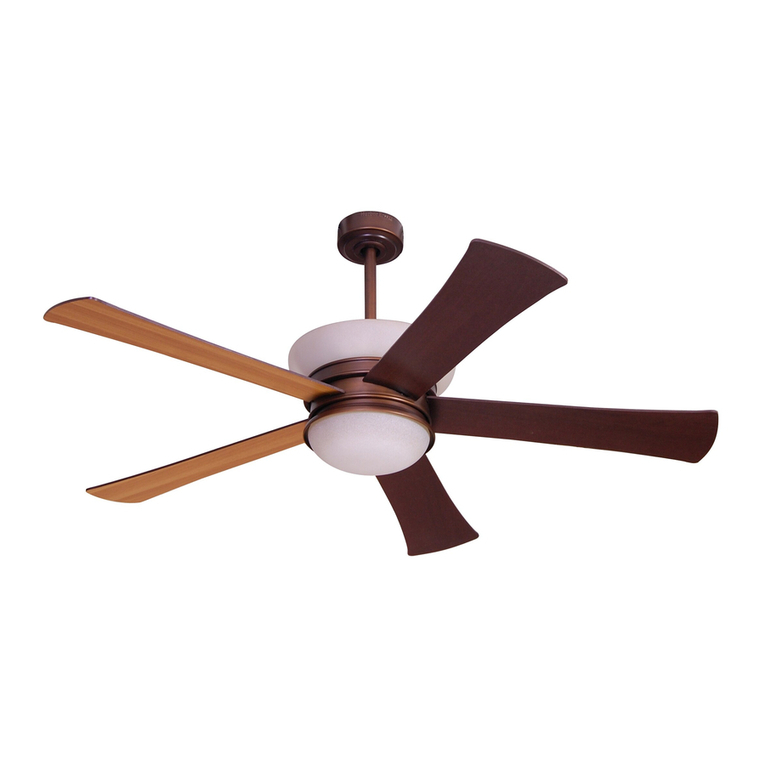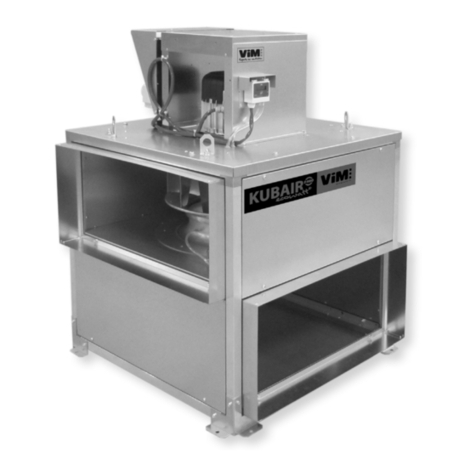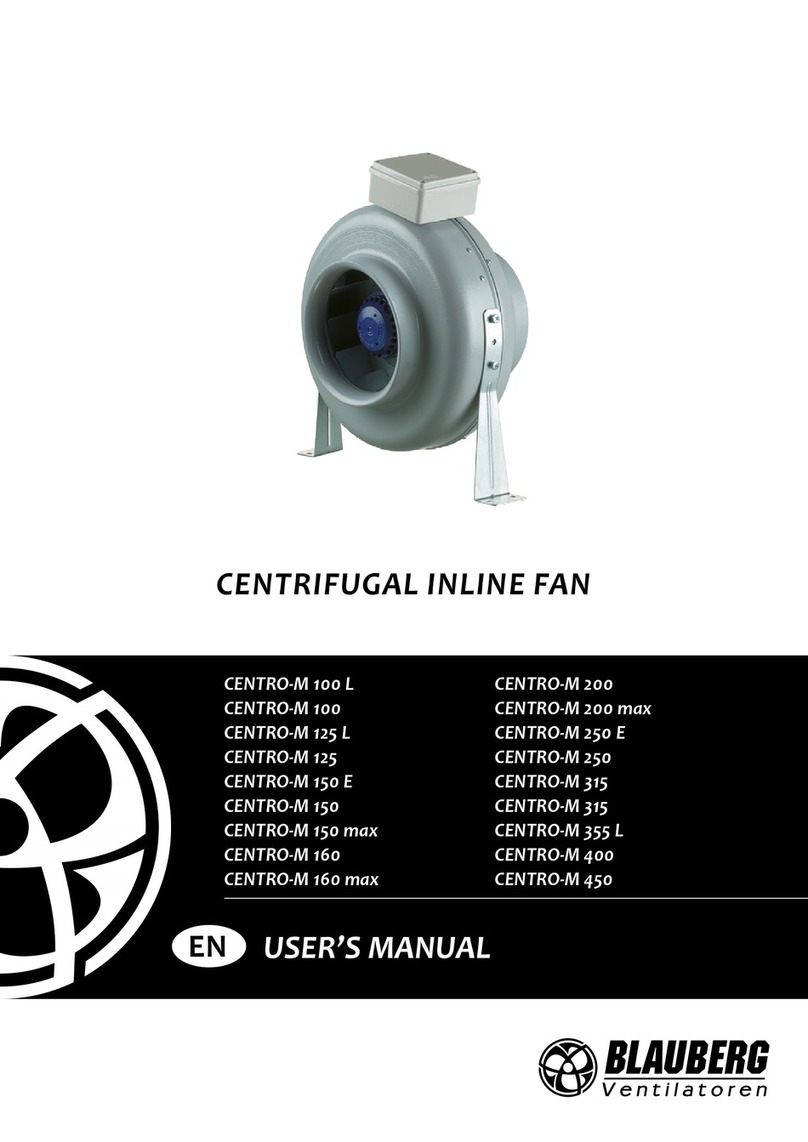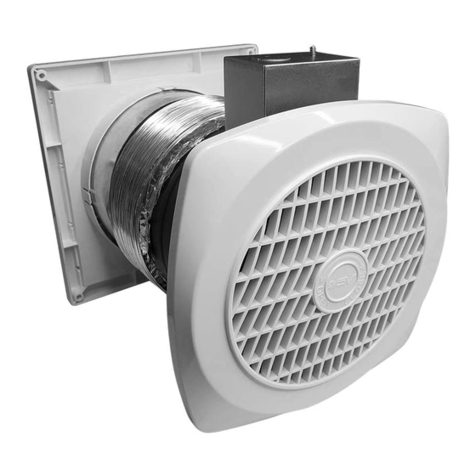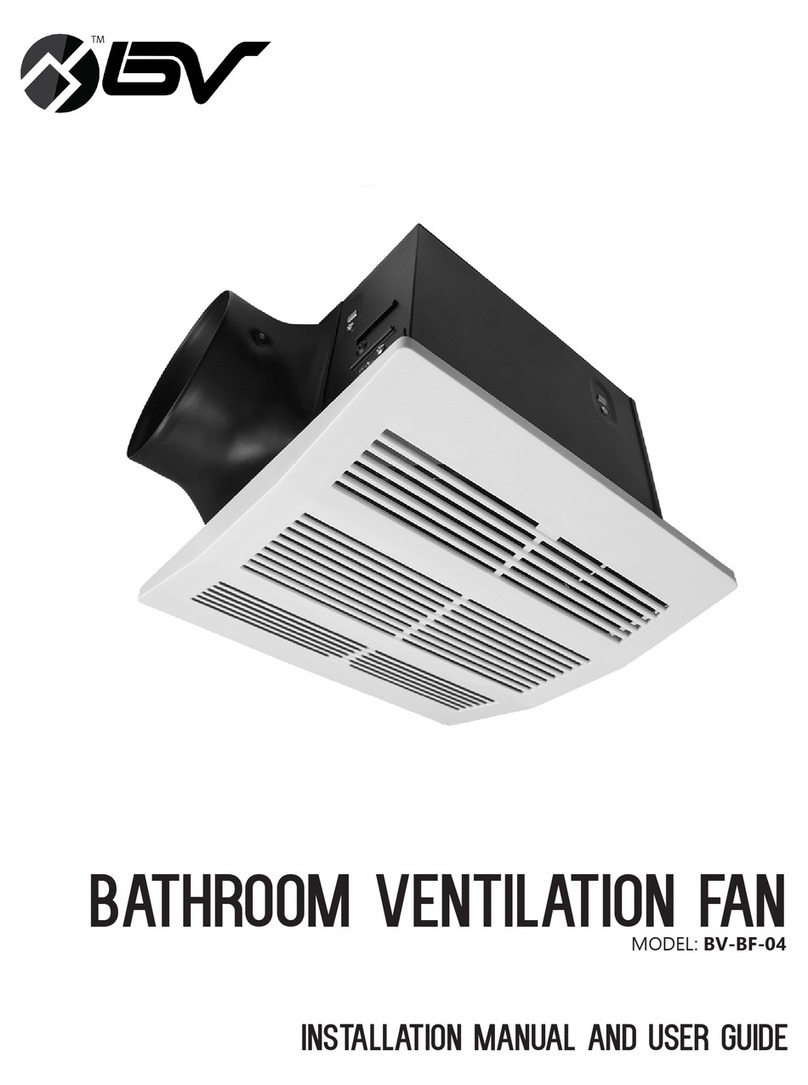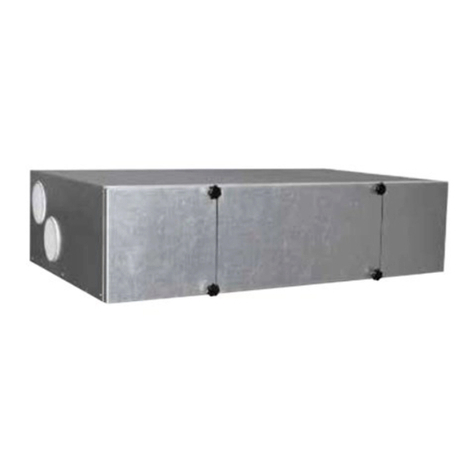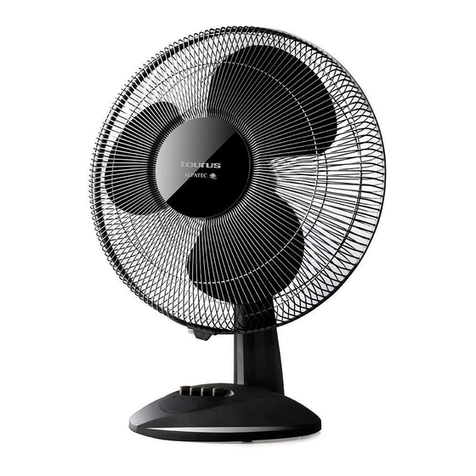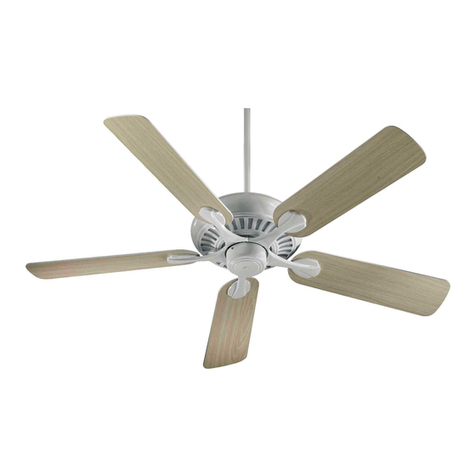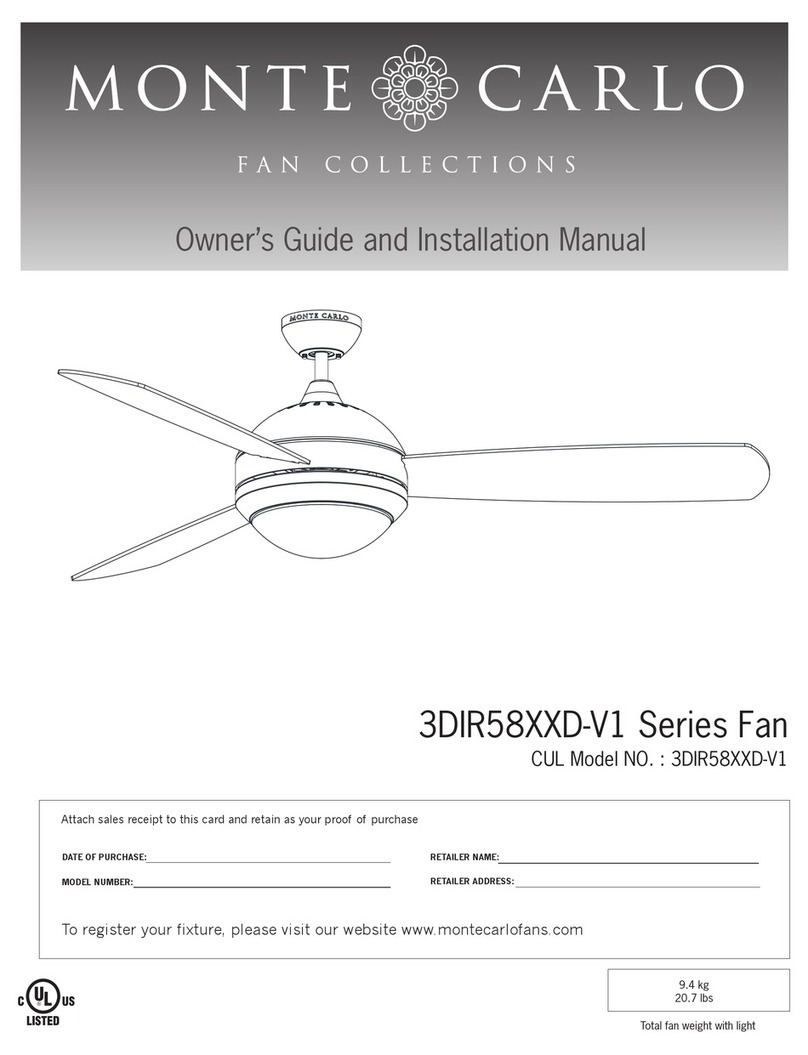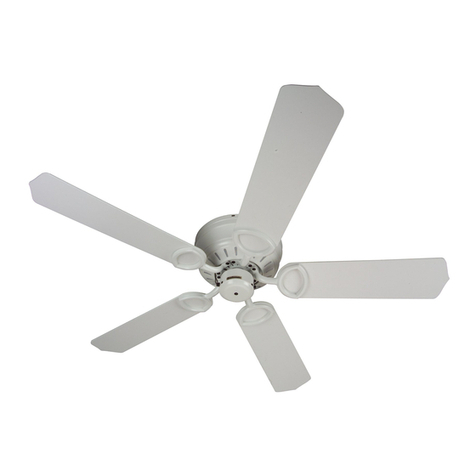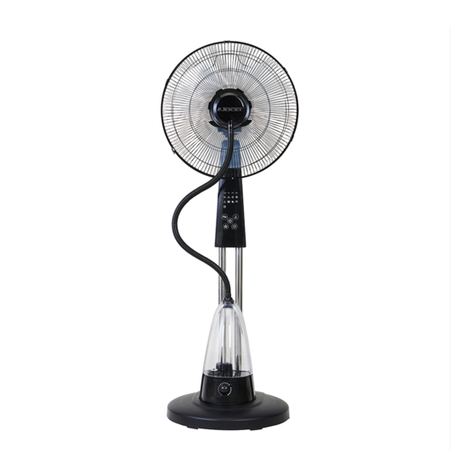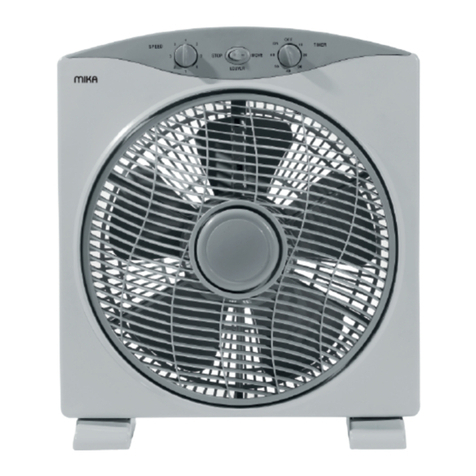
Lápiz y regla
Destornillador de punta plana
Taladro, accionamiento eléctrico o de trinquete
Broca de 3/16″
Alicates
Sierra de yeso o sierra de sable
PRECAUCIÓN
BV-WF-01 VENTILADOR DE PARED
Guía de Instalación
DIAGRAMA DE CABLEADO
ADVERTENCIA
HERRAMIENTAS NECESARIAS
USO Y CUIDADO
6
No.
1
2
3
4
5
6
7
8
9
10
11
12
13
Descripción
Reja
Tuerca de chapa
Tornillos De Chapa
Soporte de montaje del motor
Motor
Cuchilla
Cobertor de la caja de cableado
Tornillo de tierra verde
Caja de cableado
Alojamiento
Receptáculo
Primavera
Soportes de montaje
REPUESTOS Y MANTENIMIENTO
DESCONECTE LA ENERGIA ELÉCTRICA
ANTES DE DAR SERVICIO AL VENTILADOR.
No encienda el ventilador al encender un fuego
en una chimenea o estufa de leña hasta que
la compuerta esté completamente caliente y
completamente abierta. Encender el ventilador
demasiado pronto puede atraer humo y gases de
combustión a la habitación. Espere hasta que el
fuego esté bien establecido.
Siempre desenchufe el motor del ventilador antes
de repararlo. Los cojinetes del motor de este
ventilador están lubricados de por vida y nunca
necesitarán lubricación.
Limpie la aspa del ventilador y el motor cada seis
meses retirando la rejilla, desconectando el motor
y aspirando suavemente la aspa del ventilador y
el motor.
Limpie la rejilla con agua tibia y jabón. Use un
detergente suave, como un líquido para lavar
platos. NO UTILICE ROPA ABRASIVA, LANA DE
ACERO O POLVOS DE RECLAMACIÓN.
Lea estas instrucciones detenidamente antes de instalar, operar o reparar el ventilador. Conserve esta guía para referencia futura.
1 1
2
3
3
4
5
6
3
8
9
7
10
11
12
13
13
1. Solo para ventilación general. No lo use para
agotar materiales y vapores peligrosos o
explosivos.
2. Para evitar daños del motor y los impulsores
ruidosos y/o desequilibrados, mantenga
el rociador de paneles de yeso, polvo de
construcción, etc. fuera de la unidad de
potencia.
3. Lea la etiqueta de especicaciones del
producto para obtener más información y
requisitos.
4. No utilizar en el baño.
5. Para reducir el riesgo de lesiones, instale el
ventilador al menos a 2,1 m (7 pies) sobre
el piso.
PARA REDUCIR EL RIESGO DE INCENDIO,
DESCARGA ELÉCTRICA O LESIONES A LAS
PERSONAS, OBSERVE LO SIGUIENTE:
1. Utilice esta unidad solo de la manera
prevista por el fabricante. Si tiene preguntas,
comuníquese con el fabricante a la dirección
o número de teléfono que guran en la
garantía.
2. Antes de reparar o limpiar la unidad, apague
el panel de servicio y bloquee los medios de
desconexión del servicio para evitar que la
fuente de poder se encienda accidentalmente.
Cuando los medios de desconexión del
servicio no puedan bloquearse, je de
forma segura un dispositivo de advertencia
prominente, como una etiqueta, al panel de
servicio.
3. El trabajo de instalación y el cableado
eléctrico deben ser realizados por personas
calicadas de acuerdo con todos los códigos y
estándares aplicables, incluidos los códigos y
estándares de construcción con clasicación
de resistencia al fuego.
4. Se necesita suciente aire para la combustión
adecuada y el escape de gases a través
de la chimenea (chimenea) del equipo de
combustión de combustible para evitar la
extracción de aire. Siga las pautas y las
normas de seguridad del fabricante del equipo
de calefacción, como las publicadas por la
Asociación Nacional de Protección contra
Incendios (NFPA) y la Sociedad Americana
de Ingenieros de Calefacción, Refrigeración
y Aire Acondicionado (ASHRAE), y las
autoridades locales del código.
5. Al cortar o taladrar en la pared o el techo, no
dañe el cableado eléctrico y otras utilidades
ocultas.
6. NO CREAR UNA APERTURA EN UNA
PARED DE INCENDIO PARA INSTALAR
ESTE VENTILADOR. No es un extractor,
sino que está destinado a dirigir el aire de una
habitación a otra.
7. Esta unidad debe estar conectada a tierra.
8. El voltaje de suministro del servicio eléctrico
debe ser 120V 60HZ.

